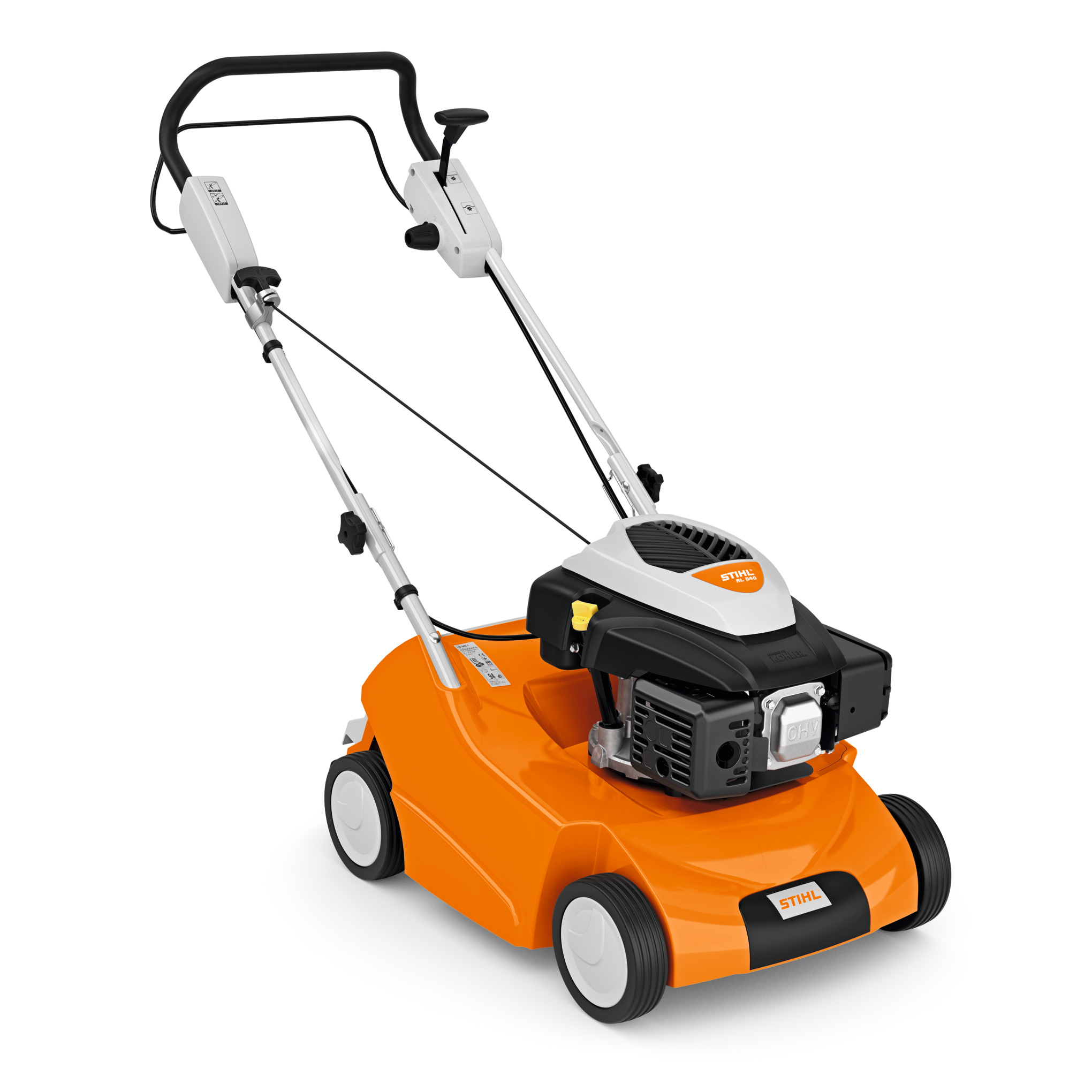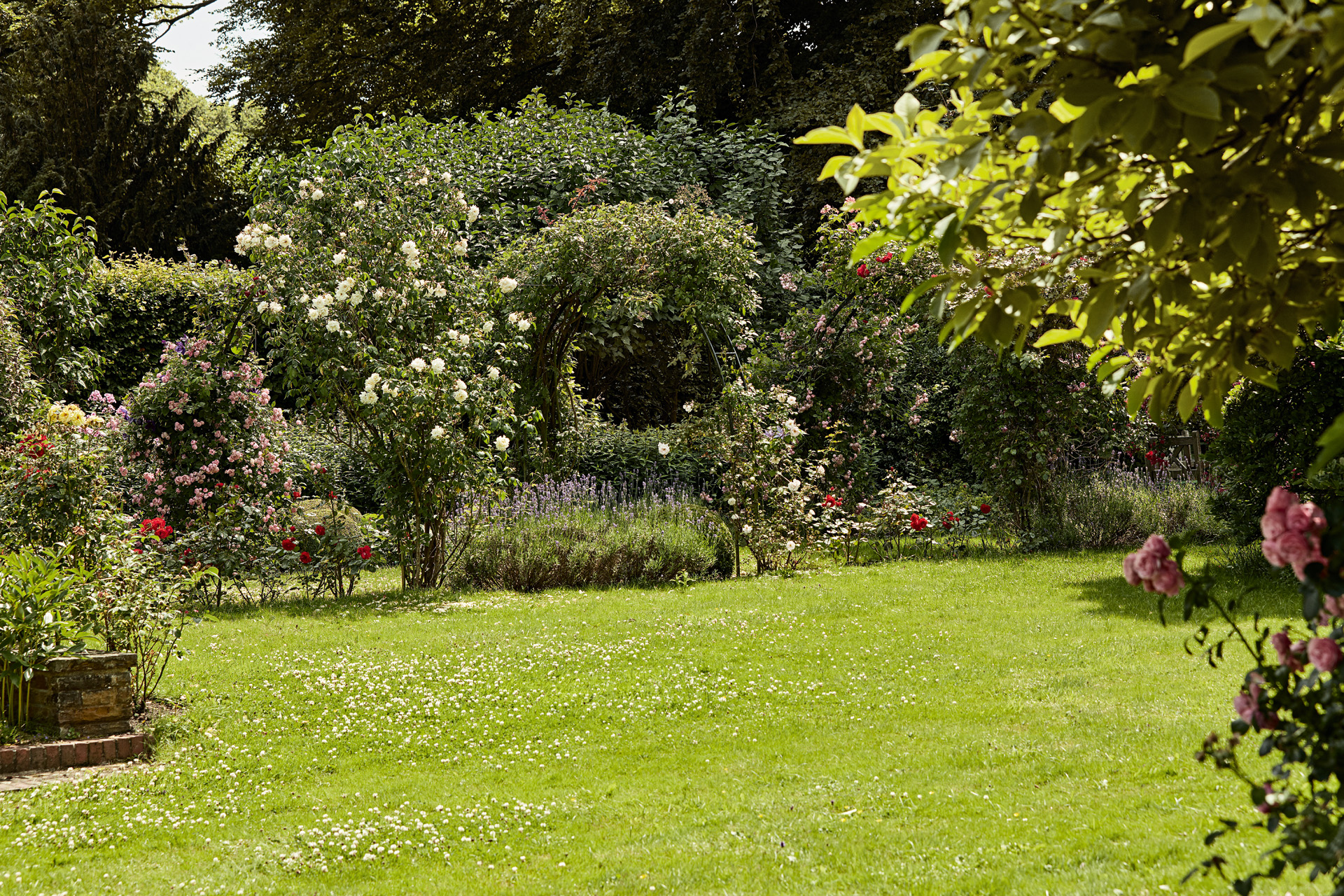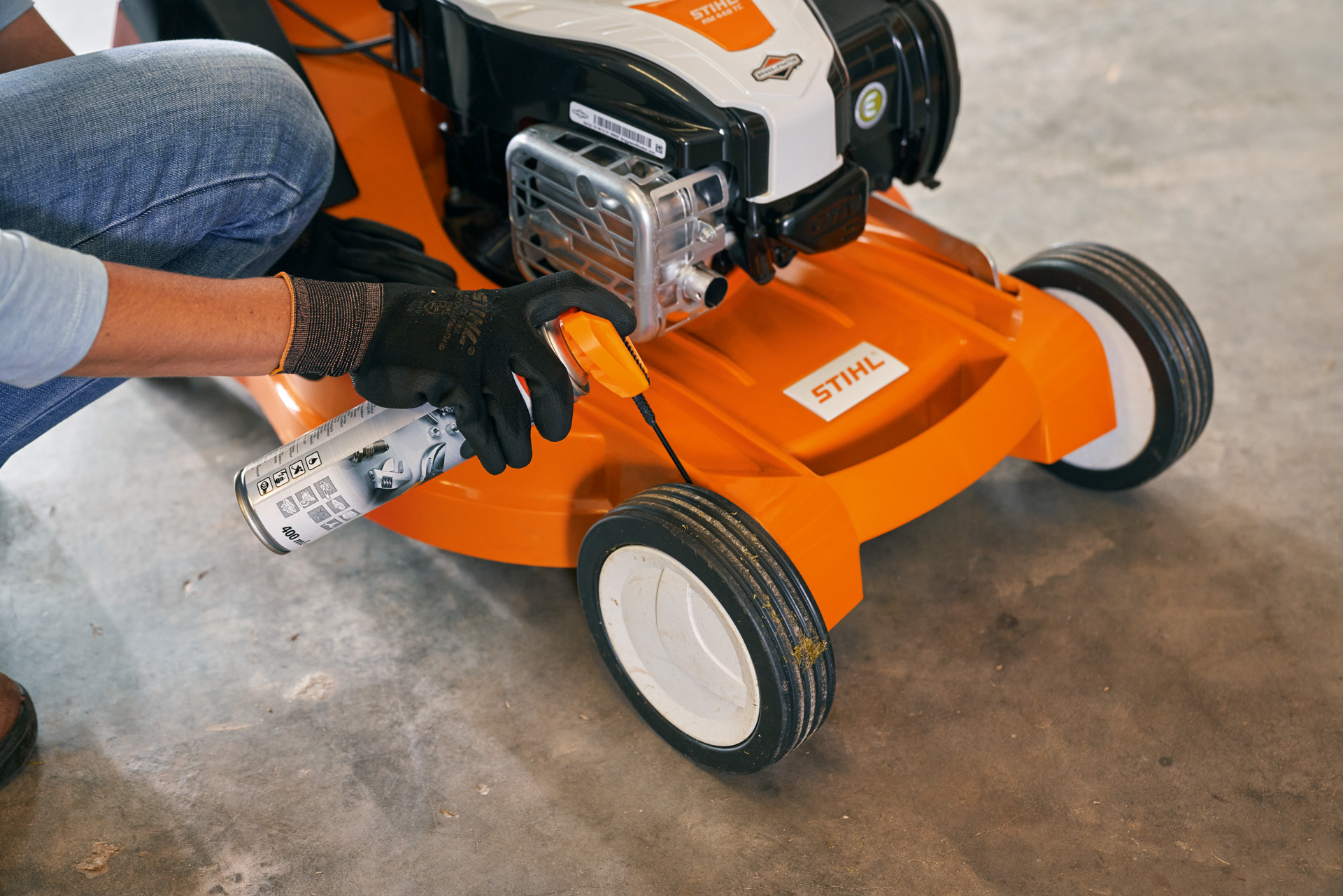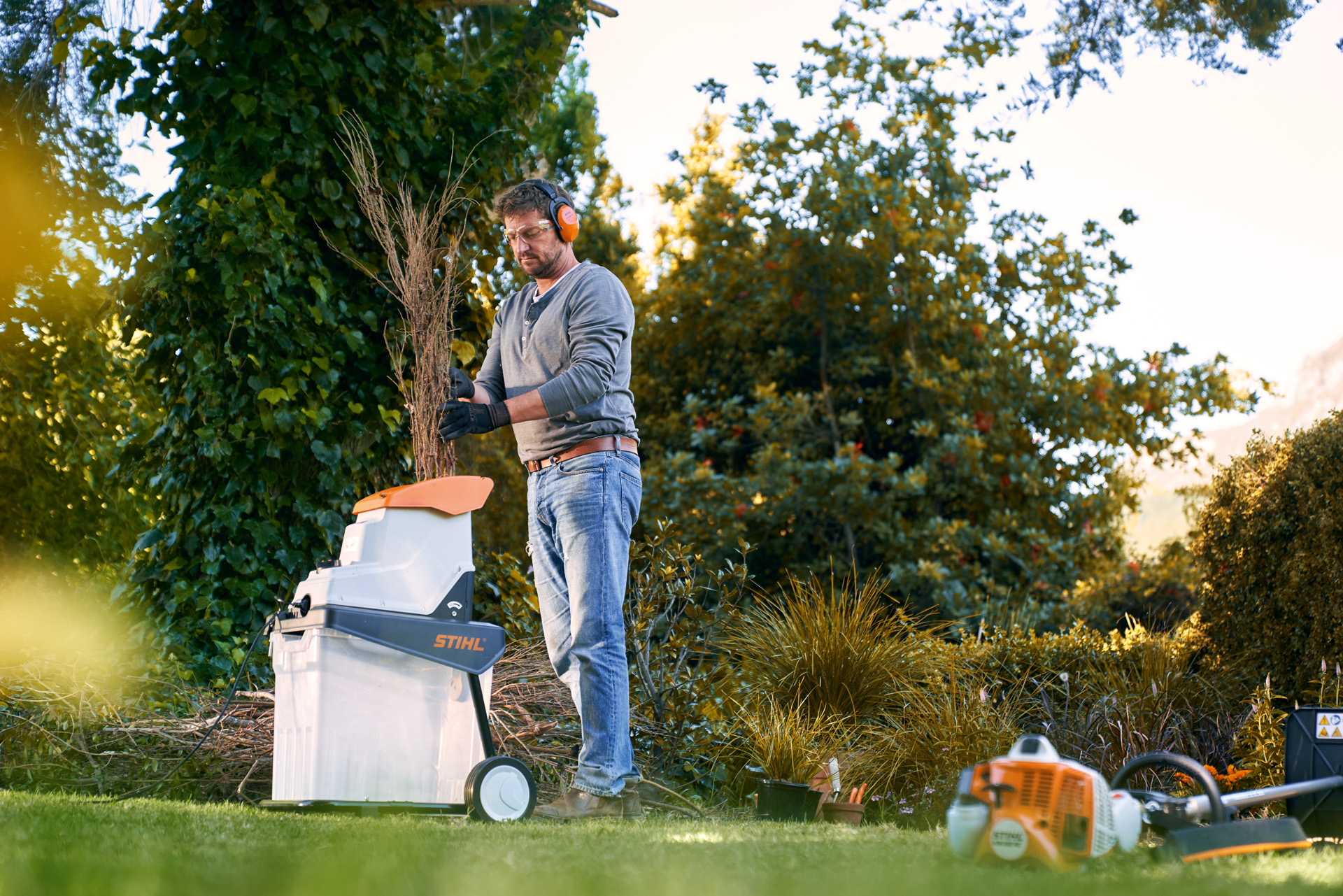How to fertilise your lawn
Fertilising your lawn replenishes the nutrients it loses through mowing, but choosing the right feed is key – our guide tells you how.
14.07.2023

Why you need to feed your lawn
All through the warmer seasons, your lawn is used for picnics, parties, and playing, and it is frequently mown. All of these contribute to depleting leaf mass and the vital nutrients your lawn needs to thrive. Fertilising with the right lawn feed restores essential nutrients to your grass, of which nitrogen (N), in particular, promotes the regeneration of all parts of the plant. Good lawn feed products include nitrogen alongside potassium (K) to strengthen the grass against disease and phosphorus (P) to promote root growth.
Is lawn feed always necessary?
Not every lawn requires fertilising. If your garden soil is naturally rich in nutrients, your grass only needs regular watering – but that is rarely the case. In general, if you have laid your lawn yourself, you should feed it regularly to keep it strong and lush.

Soil testing helps you choose the right feed
It’s no surprise that lawns that lack nutrients struggle to survive. They show little growth, and the grass plants become vulnerable to diseases and pests. You may not realise, though, that it’s equally important to make sure you don't overload your lawn by over-fertilising, as this can also cause diseases and impair growth. To start from an informed position about your lawn feed requirements, we recommend testing your soil.
There are simple home kits for soil testing available to buy, or you can send a sample for expert analysis. Finding out the pH value and nutrient composition of the soil your grass is growing in gives you a great head start in knowing which lawn feed products will get the best results. You can also be confident that you won’t be loading the soil and groundwater with unnecessary nutrients.
More about soil testing
Soil testing is widely used in the agricultural sector because it can pinpoint exactly how to use resources such as feed for the biggest impact. The domestic gardener can benefit in the same way: knowing the composition of your soil will guide you towards what grows successfully and the best way of fertilising your lawn.
Test the pH value yourself
Knowing the pH value of your soil is a very useful starting point for establishing your lawn care routine. Digital probe tests are widely available and simple to use; just push them into the ground for an analysis of the pH value, and often also the moisture content and light level. For lawns, a neutral to slightly acidic pH value of 5.5–7 is best; a much lower value means you have acidic soil which will inhibit the availability of nutrients to your lawn. If the pH value is below 5.5, we recommend applying 150g of lime (calcium carbonate) per square metre, then fertilising four weeks later with 20 to 30g of nitrogen-rich feed per square metre. Leave the lawn alone for at least ten days before scarifying it.

When Is It Time to Fertilise my lawn?
We recommend regular fertilising on a seasonal basis, so your lawn always has what it needs to encourage continuous growth. You should certainly fertilise your grass before it starts to go yellow or brown, as this can be a specific indicator of a nutrient deficiency. Moss is also a sign that you need to feed your lawn, as it thrives in low-nitrogen conditions. If it is spreading through your lawn, you know your soil needs fertilising; in a well-nourished lawn, moss is soon driven out by the fast-growing grass – in other words, feed your lawn regularly if you want to get rid of moss for good.
How often should I fertilise my lawn?
Fertilising the lawn twice a year is good, once in spring and once in autumn, though if you are already consistently mulch mowing, you could skip one or both. If you mow your grass often, or children spend a lot of time playing on it, you may want to fertilise it more – up to a maximum of four times per year.
For a comprehensive spring lawn care routine, you can scarify your lawn and apply lawn feed afterwards to help your grass recover quickly. The fertilising process can be combined with overseeding bare patches for new growth – you can even buy ready-made mixes of grass seed with feed for this purpose.
Low-nitrogen fertilising in autumn: The last lawn feed of the year should be in autumn, somewhere between the middle of September and the middle of October. Make sure you choose a specially formulated autumn lawn feed containing as little nitrogen as possible, but with a high potassium content. Potassium-rich fertilisers strengthen the cell walls of the grass for winter.

Feeding your lawn a properly balanced diet
The right lawn feed for your garden
There’s no universal fertiliser that is right for every lawn, so you need to find a slow-release fertiliser suitable for the type of lawn you have. Never use fertilisers intended for cultivating crops, as these are only effective in the short term and will put a strain on the roots of your lawn because they contain the wrong concentration of nutrients for grass.

What are the most important active ingredients in fertilisers?
Once you’ve found the right feed, you can get going with the fertilising process. The right way to apply fertiliser to your lawn depends on the type you are using.
Slow-release fertilisers generally all contain the same essential nutrients for healthy soil, however the proportional composition of the active ingredients is varied to suit different seasonal needs and the individual requirements in your garden:
| Active ingredient | Description |
|---|---|
| Potassium (K) | Increases pest resistance and regulates plant metabolism. |
| Phosphorus (P) | Strengthens root growth and helps to protect against frost. |
| Magnesium (Mg) | Supports chlorophyll formation during photosynthesis and ensures a rich green colour. |
| Calcium (Ca) | Stabilises the cell walls of the grass and helps plants absorb nutrients from the soil. |
| Nitrogen (N) | Encourages cell division and the regeneration of all parts of the plant. Stimulates lawn growth. |

Top tips for fertilising your lawn
- Before fertilising, we recommend scarifying your lawn for maximum benefit and to rejuvenate your grass. However, factor in a few days of rest for your lawn between scarifying and fertilising it.
- Don’t feed your lawn while there is any ground frost.
- Do not apply fertiliser in direct sunshine – wait for a cloudier day if necessary.
- Each time you feed your lawn, ensure that you keep it generously watered and wait a few days before mowing.
- The grass should be around 5 cm high before you apply fertiliser.
Scarifying the lawn before you feed it
Scarifying is a key part of good lawn care, just like fertilising. We recommend scarifying before you apply lawn feed. Doing so helps to increase water permeability and to remove dead plant matter and weeds from the lawn, to maximise the effectiveness of your lawn feed. With more light, air and water at the roots, the grass can absorb the beneficial substances more easily and utilise them better.
Add air and light for a beautiful green space

STIHL lawn aerators: rejuvenate your lawn
STIHL petrol-powered and electric scarifiers give your lawn the air, water and nutrition it needs for dense growth and a vibrant green colour.
An alternative approach to lawn feed
A vibrant, thick and healthy lawn requires regular care. However, many lawns do not necessarily require lawn feed, as mulch mowing can be a cost-effective and practical way of fertilising them over the long term.
What is mulch mowing?
Conventional mowing collects the clippings from your lawn, while with mulch mowing, they are distributed back over the lawn. This process returns vital nutrients to the earth in a practical and natural way as the nitrogen in the mulched grass clippings is quickly mineralised and becomes a valuable fertiliser. You can get dedicated mulch mowers to do this, or you can also buy mulching kits that can be fitted to many of our standard STIHL mowers. These shred the grass cuttings into small particles before scattering them. This shredding step means the grass clippings are more easily absorbed into the lawn rather than smothering it.
Mulch mowing instead of separate fertilising
Mulch mowing combines the lawn mowing and fertilising process into a single step, so you can save time and money. Mulch mowing means you only need to fertilise if your soil is particularly demanding or your lawn is diseased – in this case, it may need specific minerals not available in the grass clippings.
Summary: how to fertilise your lawn
- Soil testing will help identify the right fertiliser for your lawn.
- Feed your lawn in spring and autumn.
- If you use your lawn a lot, you can fertilise it three to four times a year.
- Feed your lawn after scarifying for a healthy soil structure and strong recovery.
- Mulch mowing is a cost-effective and environmentally friendly alternative to fertilising.






